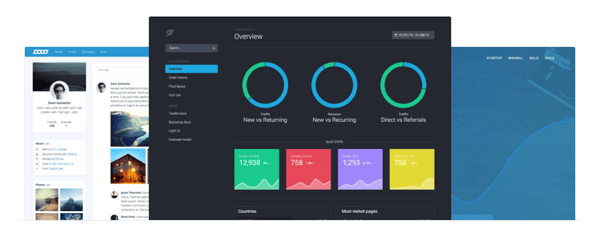Top Responsive Web Design Frameworks

There has been a lot of buzz around the use of responsive frameworks in design thanks to the efficiency they provide in developing user-centric experiences.
Below are some of the most popular frameworks being used today and some reasons why a developer or designer would choose one over the other.
1. Bootstrap
This framework has long been one of the best front-end frameworks and is now available in the latest version, Bootstrap 3. Bootstrap boasts some compelling features like advanced navigational elements, a structured grid system and many others worth exploring. The use of Bootstrap enables developers to build different types of sites without the need of getting technical. It comes with a start-up guide and thus is a great option for those without advanced levels of design skill. Bootstrap provides the option to create fluid or fixed-width layouts and strong mobile support, which means the resulting website can be viewed using any device. Additionally, Bootstrap offers themes for dashboards, which makes it easier for developers to create resources to see who is coming to a site and what they are doing once they arrive.

2. Foundation
Foundation is yet another popular framework used in the creation of modern Web designs and applications for mobile and Web. Of the most popular frameworks, this might be the easiest to use, so novice designers are better suited for this framework. Its ease of use should not be mistaken for poor features, as the framework is loaded with features including navigation, layouts, library containers and media support. Foundation also offers users a wide list of plugins that developers can take advantage of.
3. Pure
This is an exceptional framework with a tiny footprint and a minimal style geared toward mobile. It is a small CSS Modules set and comes with a minimal style. Pure has also made available a wide range of CSS components and boasts an interesting customization feature that gives developers the option of creating and using their style sheets.
4. Skeleton
Skeleton is not the most well-known framework but is a great option regardless of the size of the website being developed. The lightweight framework assists in the creation of sites for desktops, mobile, tablets and other related devices without interfering with the quality. Skeleton comes with all the basic user interface elements, forms, buttons, tabs and provides a structure that is well organized. It also provides other exceptional features that can be used in building attractive sites.
5. Montage
Montage is an HTML5 framework that will make modern Web page development a smooth process particularly for single-page designs (Image E). It provides a cloud-based, visual authoring environment in beta that is free to use, but developers can also choose to code in their favorite text editor.
6. Siimple
Just like the name suggests, Siimple is a flexible and simple to use front-end framework designed to create Web pages. This framework is beautifully designed and is ideal for building clean, flat Web pages. The framework's simplicity makes it a great option for people who are just starting out in the world of Web designing, as they can experiment freely using this framework and be in a position to create clean and minimal Web designs with ease.
7. Semantic UI
This framework has become popular in a short period of time. One of the main reasons is because Semantic UI allows third-party style guides to be incorporated, even from other frameworks. This explains why it continues to be listed as one of the top responsive Web design frameworks available today (Image G). Semantic UI comes with a number of features such as loaders, buttons and divers as well as features collections such as breadcrumbs and forms. Developers also get complex modules like sticky bones and popups. This is a rich and robust framework increasingly appealing to digital designers.
8. Cascade
Cascade comes with semantic and non-semantic grids and base templates navigation elements. It is built with a universal approach and this makes it easy for developers to add different elements in the design process. These features also give developers and designers the ability to create high-performance pages for different browsers ranging from the old versions to current browsers. This framework can be used by developers in working on components that are essential in a certain project.
The Choice is Yours
This list contains some of the top frameworks to choose from. Check them out, ask questions and go design.

Subscribe to Our Newsletter!
Latest in Web Design








